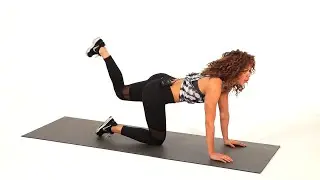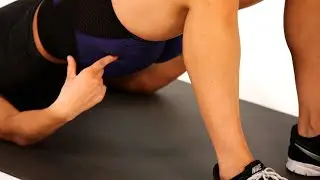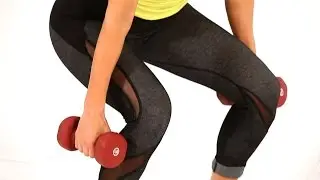How to Teach Someone to Ride a Bicycle
Shift into a Higher Gear with these Assets for Cyclists
Turbospoke Bicycle Exhaust System: http://amzn.to/1Fdha4X
Raskullz Cat Helmet: http://amzn.to/1gpc6i8
Sunlite Squeeze Horns: http://amzn.to/1NBvjvR
Camelbak Men's M.U.L.E. Hydration Pack: http://amzn.to/1Kl9ZUp
LED Cycling Flash Taillight: http://amzn.to/1NBxf7j
Lightweight Bicycle Mirror: http://amzn.to/1OcXAst
Watch more Bike Riding Tips videos: http://www.howcast.com/videos/410090-...
Riding a bicycle is a fun way to get around, and it also can have a big impact on reducing carbon emissions, so if you know someone who needs some instruction, help them out.
Warning
Always wear proper safety equipment such as helmet, and knee and elbow pads, when riding and learning to ride a bicycle.
Step 1: Get a tricycle
Start the training on a tricycle if the person you want to teach is a child.
Tip
A tricycle can be introduced to the child before they walk. It will teach steering and peddling control.
Step 2: Find a spot
Find a suitable spot away from heavy auto and walking traffic. Beginning the training on a slight downward grassy hill can prevent serious injuries if the subject falls.
Step 3: Use training wheels
Add training wheels to a bicycle to teach the subject balance. Training wheels should be installed on the bike correctly and should only be used on a flat surface. They can cause the bike to topple over if the child goes too fast, so the child should still be monitored.
Step 4: Assist the cyclist
Assist the cyclist learn how to balance by holding onto the bike. This method can be an alternative to training wheels or used after a period of training wheels. Tell the subject to lift their feet and walk along with them holding the bike. Eventually, you will want to put them on a very, very small decline and let them try to steer themselves.
Tip
Instruct the cyclist to keep their knees close to the bike in order to maintain balance.
Step 5: Add peddling
Add peddling to the mix. Encourage your learner to peddle while maintaining balance. This step may be easier for subjects who started with training wheels. Try riding in a straight line and turning corners. Stay next to or near your subject until they are comfortable.
Step 6: Teach stopping
Teach the subject how to stop their bicycle. Most children's bikes are equipped with back brakes on the peddles, so you'll need to instruct your child to peddle in reverse to brake.
Tip
Hand brakes are easier to use, so if you feel it's helpful, have an inexpensive handbrake installed on the bike.
Step 7: Talk about safety
Talk to the subject about safety. Some topics include stopping before riding out into traffic, obeying traffic signs, looking behind them before changing lanes or turning, and always riding on the right side of the road or walkway. Be patient and soon your subject will be cruising away on their own.
Did You Know?
One of the earliest incarnations of the bicycle, the Velocipede, was introduced in the late 1800s but due to its uncomfortableness, it was more commonly called the "bone shaker."































